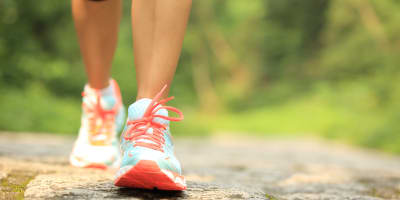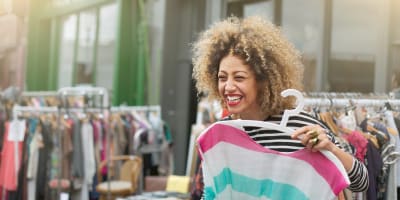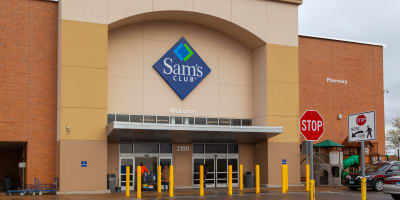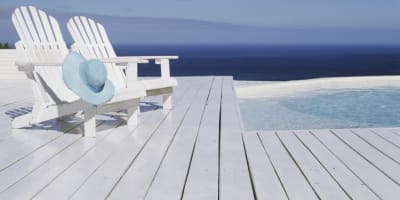We may earn commission from links on this page, but we only recommend products we believe in. Pricing and availability are subject to change.
Where to buy solar eclipse glasses and how to know if they're safe
The second total solar eclipse in a decade in the United States is happening on April 8, 2024. The U.S. had its last total solar eclipse in 2017 — during what was dubbed the "Great American Eclipse" — but, remarkably, the country is in for another rare treat this spring when this second total solar eclipse of this century will pass over North America. Are you prepared to see it? Can you see it where you live? Are you traveling to the band where you can see this rare treat?
Celestron EclipSmart Safe Solar Eclipse Glasses (four pack)
$11$12Save $1Soluna Solar Eclipse Glasses CE and ISO Certified (10 pack)
$30Celestron EclipSmart Safe Solar Power Viewers + Map (2 pack)
$13Celestron EclipSmart Safe Solar Observing & Imaging Kit
$25$27Save $2Lunt Solar Systems Eclipse Glasses ISO and CE Certified (10 pack)
$17$22Save $5Celestron EclipSmart Safe Solar Eclipse Binoculars
$88
Before 2017, it had been more than three decades since the last total solar eclipse was visible from the U.S. in 1979. But just because this once-in-a-lifetime event is happening twice within a decade doesn't mean it's not a big deal, especially since the next total solar eclipse that can be seen from the contiguous U.S. will be in 2044.
Experts and astronomy enthusiasts alike are eagerly preparing for the eclipse on April 8, but there are a few steps that need to be taken to make sure you can watch the eclipse safely from wherever you are. To avoid damage to your eyes, you can only view an eclipse safely through specially designed solar viewing glasses — i.e. "eclipse glasses" — or using a safe handheld solar viewer at all times. Looking directly at an eclipse can burn your retinas, leading to what's called "eclipse blindness." Regular sunglasses will not protect your eyes during an eclipse.
With sites like Amazon, Walmart, eBay and Temu flooded with counterfeit products more than ever before, it's confusing for consumers to know where to buy safe and tested eclipse glasses. To help, we've consulted the American Astronomical Society's guide to safe solar eclipse viewing as well as their list of safe suppliers of solar viewers to provide you with all of the information you need to stay safe during this year's eclipse.
When is the next solar eclipse?
The next total solar eclipse will take place on April 8, 2024, crossing over Mexico, the U.S. and Canada. NASA's website shares more about the path of the eclipse including timetables for when to see it in your region. After 2024, the next total solar eclipse that can be seen from the contiguous U.S. will be on Aug. 23, 2044.
Who can see the solar eclipse?
During this spring's eclipse, virtually all of North America will have at least a partial solar eclipse that day, with places within the path of totality getting a spectacular view of the moon completely blocking out the sun's rays for a short time. The path for the best viewing runs through Oklahoma, Arkansas, Missouri, Illinois, Kentucky, Indiana, Ohio, Pennsylvania, New York, Vermont, New Hampshire, and Maine.
Where to buy safe solar eclipse glasses?
Look for glasses that are ISO compliant and CE certified, meaning that they should have a certification stamp included somewhere on the product. Unfortunately marketplaces at retailers like Amazon, Walmart, Temu and eBay are often flooded with counterfeit products claiming to be compliant and certified. The American Astronomical Society has an extremely detailed and thorough list of suppliers of safe solar viewers and filters, so we recommend deferring to their list when in doubt.
The AAS does not recommend buying glasses from retailers like Amazon, Temu, eBay or other retailers with marketplaces unless a trusted seller is identified and listed on the product page. Our recommendations below are from Amazon, but we have done our due diligence to confirm that these products are from brands on the AAS's list of safe suppliers and that the suppliers are confirmed as the sellers on the Amazon product page.
Do not buy solar eclipse glasses from brands with little or no reviews, or from sellers that do not explicitly specialize in telescopes, filters, binoculars or other optical filters. It is always best to purchase items from brands that are shipped and sold by the retailer you are purchasing from rather than from third-party sellers.
How to know if your solar eclipse glasses and filters are safe
There are a few easy ways to see if your eclipse glasses are safe and effective. "You shouldn't be able to see anything through a safe solar filter except the sun itself or something comparably bright, such as the sun reflected in a mirror," according to the AAS. "If you can see shaded lamps or other common household light fixtures (not bare bulbs) of more ordinary brightness through your eclipse glasses or handheld viewer, and you're not sure the product came from a reputable vendor, don't use it."
When using a safe solar filter, your view of the sun should be "comfortably bright (like the full moon)," the AAS says. "If you glance at the Sun through your solar filter and find it uncomfortably bright, out of focus, and/or surrounded by a bright haze, don't use it."
How to watch the solar eclipse without eclipse glasses or filters
Though it's not safe to look directly at a solar eclipse without special eclipse glasses and filters, there is a way you can safely view it indirectly. Using what's called a pinhole projection, grab a small index card and punch a small hole through it. Stand with the sun behind you and let the sunlight pass through the small opening, projecting the solar image onto another surface like a piece of paper, a wall or the ground. The reflected image will show the sun's phase through the eclipse cycle.
As pictured above, I tested out this pinhole projection method in 2017 for the Aug. 21 partial eclipse that was visible from New York City. Using a small pinhole, we were able to project a small image of the sun's partial eclipse onto a piece of paper. It's remarkably easy to do with almost anything you have on hand.
Best safe solar eclipse glasses
As a brand that designs telescopes, binoculars and other optical viewers, Celestron is a brand you can trust. It's one of the recommended brands for purchasing safe solar eclipse viewing glasses, according to the American Astronomical Society. These eclipse-safe glasses from Celestron are shipped and sold by Amazon, which is preferrable to buying from third-party sellers on the platform. These paper eclipse glasses feature two different folding points to accommodate different face shapes and sizes — so even the little ones can safely view the sun. This four-pack also comes with a handy 32-page guidebook all about the eclipse, including timetables and a detailed map.
Soluna is one of the American Astrological Society's recommended brands for safe and effective solar eclipse glasses. These ones ship from Amazon and are sold from GSM Sales, another name for Soluna's company, according to the AAS's list of suppliers of safe solar eclipse glasses. These glasses are independently tested and are shown to filter 100% of harmful UV and infrared light, and 99.9% of intense visible light. This 10 pack is great for splitting among friends or a classroom.
Celestron, maker of telescopes, binoculars and other optics, is a reliable brand you can trust. These "power viewers" allow you to safely view the eclipse, but also give your view a 2x magnification to help you see things more clearly. This set also comes with a bonus poster that features a detailed map of the eclipse’s path.
Celestron is a maker of telescopes, binoculars and other optics, which means it's a brand you can trust. This three-piece set comes with a solar eclipse observing guidebook, eclipse-safe glasses, a solar-safe photo filler for capturing still images and video of the eclipse with your smartphone, DSLR or point-and-shoot camera without damaging its photo sensor.
Lunt is one of the American Astrological Society's recommended brands for safe and effective solar eclipse glasses. These glasses are ISO and CE certified to be safe for viewing the sun during an eclipse. They come with come with premium optical film filters and are designed to filter out 100% of UV and infrared light, and and 99% of intense visible light that can be harmful to your eyes.
For the more hardcore eclipse watchers, we recommend these safe solar eclipse-viewing binoculars by telescope and binocular maker Celestron. These binoculars offer 10x magnification so you can see details like sunspots clearly.






